hankyoreh
Links to other country sites 다른 나라 사이트 링크
[Seoul travels] Jeongdong: the origins of Korea’s coffee culture
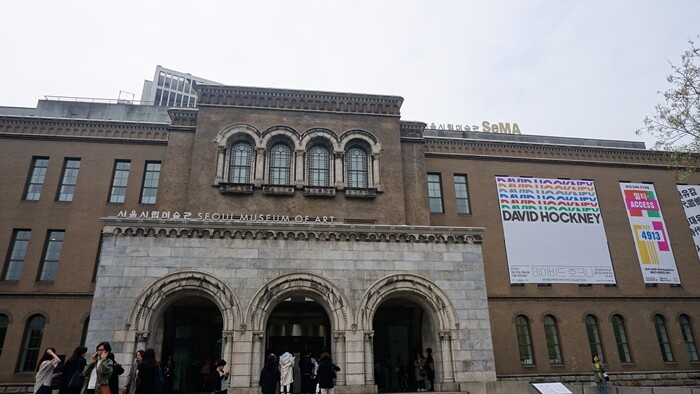
We often read that Jeongdong Street in downtown Seoul was the path to Korea’s modernization. But a closer look shows that the neighborhood has many diverse aspects. This might be described as a case of multiple personalities, of varied and differentiated identities and faces for all occasions. That’s the kind of place Jeongdong Street is.
The first face of Jeongdong Street is the high stone wall, a symbol of the Joseon royal court. At one time, the wall was regarded as a place of separation because of an urban legend that couples who walked by the wall were doomed to break up. I suppose that was a metaphorical reference to the people walking out of divorce proceedings at the domestic affairs court that used to be nearby.
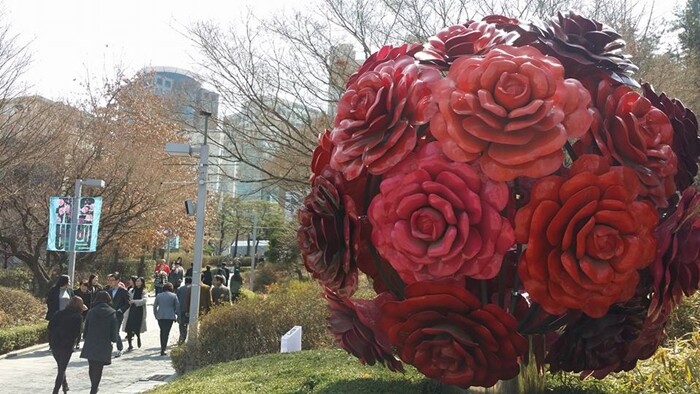
But the court was replaced long ago by a City Hall annex and the Seoul Museum of Art. The presence of this art museum downtown has made a big difference: it transformed the neighborhood, replacing its grave and gloomy air with a light-hearted and festive atmosphere.
On the 13th-floor observation deck at the Seosomun Building next to the museum, the annex of Seoul City Hall, I encounter another side of Jeongdong’s charm. After admiring the sweeping cityscape, visitors typically head inside to the cafe for a cup of coffee.
Coffee made its first appearance in Korea at the port of Chemulpo (known today as Incheon), but Jeongdong was where it really took off. Beginning with the US in 1883, the Western powers rushed to set up consular offices in the neighborhood, and those diplomats brought their lifestyles along with them.
That means Jeongdong could be called the “path of coffee,” or even “the road to a lifestyle revolution.” When Koreans use the English word “lifestyle,” they’re often talking about luxurious home décor or fashion, but the word’s basic meaning is the food, clothing and shelter around which our lives revolve.
At first, Koreans called coffee “yangtangguk,” meaning Western soup, based on coffee’s resemblance, both in color and taste, to traditional medicine (called “tangyak”). Later, the drink came to be called “gabi” or “gabae,” attempts to render “coffee” in Chinese characters. Coffee epitomized the “new culture” sweeping in from the West.
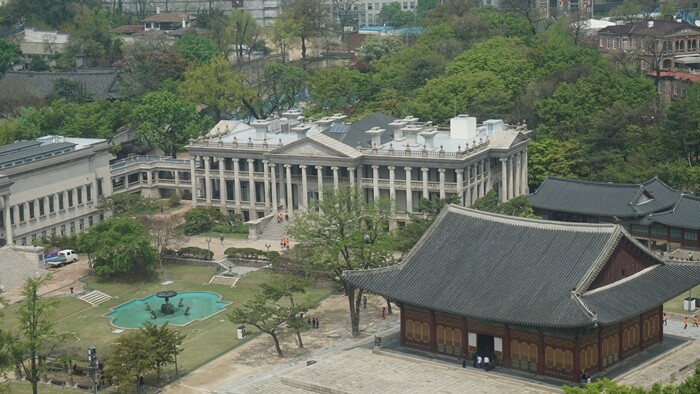
One well-known connoisseur of coffee was Gojong, the last king of the Joseon Dynasty. There’s a peculiar building in Deoksugung Palace called Jeonggwanheon Hall, which was built by a Russian architect. A sign in front of the building explains that the king used to have “refreshments” and listen to music here.
There’s considerable debate among historians about the use of the building — including whether coffee was actually served there — but it seems clear that Gojong was a big fan of the stuff. According to the writings of Horace Allen, who became court doctor under Gojong in 1884 and served in that post for three years, coffee and black tea were already being served in the court at that time.
Allen once wrote that Gojong had a habit of working very late and not going to bed until early in the morning, so he typically arose at noon. I would tentatively suggest that Gojong’s sleeping habits were due to all that coffee.

About halfway up the hill on Jeongdong Street was the Russian legation, the workplace of a woman named Antoinette Sontag who really deserves mention here. She not only spoke German, French and English but was even fluent enough at Korean to be able to serve Gojong without an interpreter.
The king was so touched by the consideration Sontag showed him while he was taking refuge in the Russian legation that he rewarded her with the gift of a brick building and some land in the possession of the crown. Sontag built a two-story building there and opened an establishment called the Sontag Hotel. Since she served not only Western food but also coffee, the hotel can be described as the wellspring of coffee culture in Korea.
Unfortunately, no traces remain of Sontag’s hotel or the house where she lived. We can only guess that it occupied the current site of Ewha Girls’ High School and the Canadian embassy. I suppose the only surviving witness of all those events is the pagoda tree in front of the Canadian embassy, a “protected tree” that is well over 560 years old.
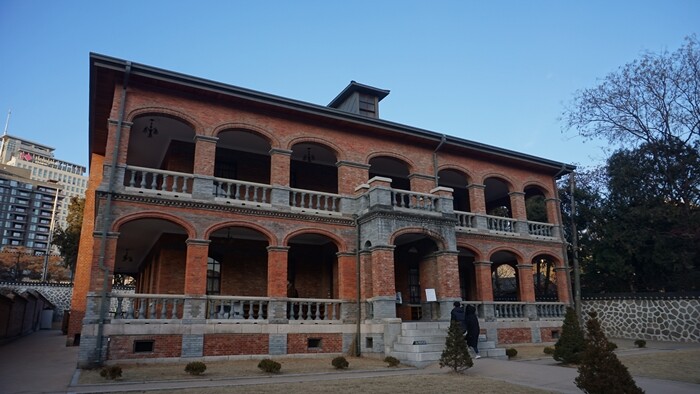
The area gets considerable competition from luxury coffee shops and exquisitely designed cafes and bakeries. Coffee is a symbol of intellectual sensibility, of urbanity and sophistication. Coffee brought us a sense of the individual and of individualism, just as it did in Europe. Whereas alcohol is a drink to be shared, coffee is much more of a personal beverage.
If not for the low ocher-colored walls of Ewha Girls’ High School — an institution that sowed the seeds of gender equality and women’s education — this street would not be half as charming. The red bricks in the outer wall and the black tiles on the roof stand in pleasing harmony.
Across the way, the Sina Ilbo annex was reportedly built with red bricks brought over from Shanghai in 1930. Chungdong First Methodist Church is Korea’s only church building surviving from the 19th century. It’s undeniably an amazing artifact that fires up artistic sentiments. It’s no coincidence that this was where composer Lee Young-hoon got his inspiration for “Gwanghwamun Love Song”; the church also served as the physical and temporal backdrop of “Mr. Sunshine,” a popular drama that was broadcast in 2018.
The Russian legation and Jeongdong Convent, which used to be next door, have now been turned into a park, enabling a quiet stroll in the heart of the city. An apartment now stands on the spot of the culture and sports center where anchorman Cha In-tae used to broadcast so regularly.

The small alley next to Chongdong Theater leads to Jungmyeongjeon Hall, where Korean officials infamously signed the treaty that made it a protectorate of Japan in 1905. After looking through the exhibits, I step out and spot a tattered sign that says “Namdo Restaurant.” The old store, well regarded for its chueotang (loach soup), stands proudly, sandwiched between a bevy of modern-looking buildings.
That restaurant is where I had my first taste of chueotang. I’d joined some older colleagues for lunch when I was working for a broadcaster that used to occupy today’s Kyunghyang Shinmun building.
Somewhere on the street I hear a tune from “Winterreise” (Winter Journey), the song cycle composed by Franz Schubert to poems written by German poet Wilhelm Muller. Unlike their romantic sounding title, the cycle was originally inspired by the feeling that intellectuals had nowhere to go during the Napoleonic Wars. One of the recurring words in “Winterreise” is fremd, meaning “stranger” — more particularly, one who has become a stranger in their own country.
That was exactly what happened to Jeongdong Street. It was a case of people being made strangers in their own home, either by foreign powers or in the name of urban rejuvenation. A restaurant where tradition lives on is itself a source of pride and a fine example of local capital, and it should be preserved.
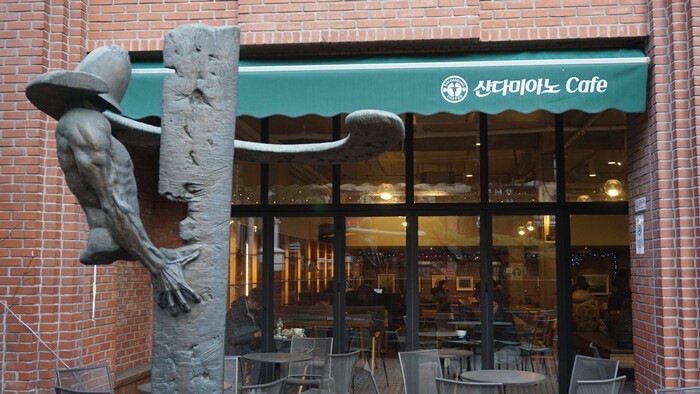
Next to the Kyunghyang Shinmun building are the Franciscan Education Center and a monastery with the Order of Friars Minor. There’s a cafe in the building called San Damiano, after the church where Francis of Assisi, an idle son of a wealthy merchant, repented of his ways. I sometimes visit this cafe, both for its tranquility and its affordable coffee.
Across the street there used to be a restaurant called Italiano that was quite famous with celebrities for its donkatsu (pork cutlets) and other Western-inspired dishes. But the restaurant is no longer there. That restaurant is where I first met my wife. In effect, I met both my life’s work and my life’s companion on Jeongdong Street.
I’d been wandering around rather aimlessly when I too had my sternstunden, as the Germans say. The phrase can literally be translated as “time with the stars,” but it refers to a dramatic turning point in one’s life. Jeongdong is the street where my life turned around.
By Son Kwan-seung, travel writer
Edited by the editorial board at Seoul&
Please direct comments or questions to [english@hani.co.kr]
Editorial・opinion
![[Column] Season 2 of special prosecutor probe may be coming to Korea soon [Column] Season 2 of special prosecutor probe may be coming to Korea soon](https://flexible.img.hani.co.kr/flexible/normal/500/300/imgdb/original/2024/0426/3317141030699447.jpg) [Column] Season 2 of special prosecutor probe may be coming to Korea soon
[Column] Season 2 of special prosecutor probe may be coming to Korea soon![[Column] Park Geun-hye déjà vu in Yoon Suk-yeol [Column] Park Geun-hye déjà vu in Yoon Suk-yeol](https://flexible.img.hani.co.kr/flexible/normal/500/300/imgdb/original/2024/0424/651713945113788.jpg) [Column] Park Geun-hye déjà vu in Yoon Suk-yeol
[Column] Park Geun-hye déjà vu in Yoon Suk-yeol- [Editorial] New weight of N. Korea’s nuclear threats makes dialogue all the more urgent
- [Guest essay] The real reason Korea’s new right wants to dub Rhee a founding father
- [Column] ‘Choson’: Is it time we start referring to N. Korea in its own terms?
- [Editorial] Japan’s rewriting of history with Korea has gone too far
- [Column] The president’s questionable capacity for dialogue
- [Column] Are chaebol firms just pizza pies for families to divvy up as they please?
- [Column] Has Korea, too, crossed the Rubicon on China?
- [Correspondent’s column] In Japan’s alliance with US, echoes of its past alliances with UK
Most viewed articles
- 1AI is catching up with humans at a ‘shocking’ rate
- 2After election rout, Yoon’s left with 3 choices for dealing with the opposition
- 3Is Japan about to snatch control of Line messenger from Korea’s Naver?
- 4South Korea officially an aged society just 17 years after becoming aging society
- 51 in 5 unwed Korean women want child-free life, study shows
- 6[Column] ‘Choson’: Is it time we start referring to N. Korea in its own terms?
- 7Korea’s 1.3% growth in Q1 signals ‘textbook’ return to growth, says government
- 8No good, very bad game for Korea puts it out of Olympics for first time since 1988
- 9[Editorial] Japan’s rewriting of history with Korea has gone too far
- 10Why Korea shouldn’t welcome Japan’s newly beefed up defense cooperation with US